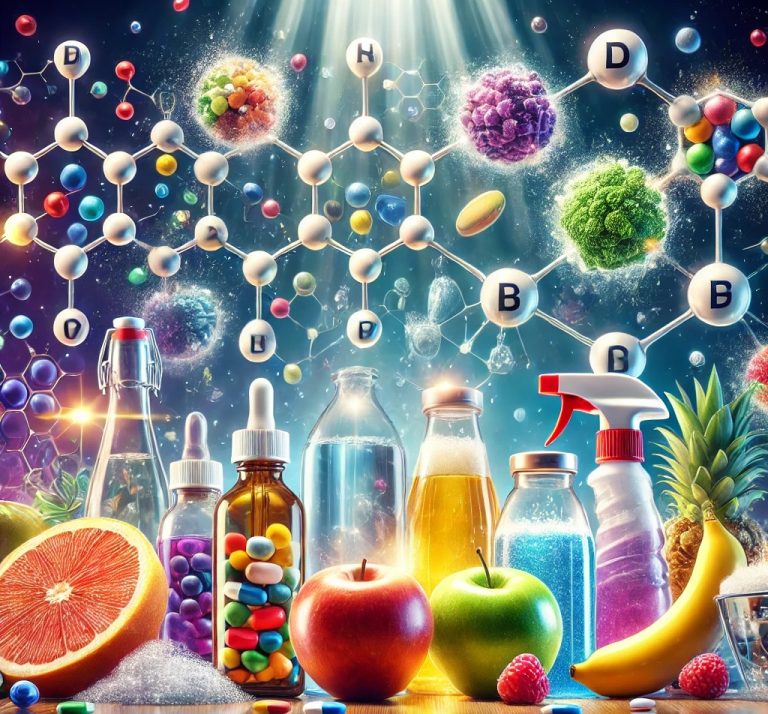Recombinant DNA (rDNA) technology, also known as genetic engineering or genetic manipulation, is the process of artificially altering the genetic material of an organism to introduce new traits or to modify existing ones. This groundbreaking technology has revolutionized fields such as medicine, agriculture, and biotechnology, enabling scientists to produce genetically modified organisms (GMOs), create life-saving therapeutic proteins, and study genes in ways that were previously impossible. The process of recombinant DNA technology involves several key steps, each with its own importance in the successful creation and manipulation of recombinant DNA. These steps include DNA extraction, fragmentation, ligation, transformation, selection, screening, and expression.
1. DNA Extraction
The first step in recombinant DNA technology is the extraction of DNA from the source organism. DNA extraction is a critical step that determines the quality and quantity of the DNA to be used in subsequent procedures. The process involves breaking open the cells of the organism, typically using a buffer solution, to release the DNA into a solution. The DNA is then purified to remove proteins, lipids, and other cellular components.
There are several methods for extracting DNA, including:
- Mechanical disruption: This involves physically breaking the cell walls, such as grinding tissue in a mortar and pestle or using bead mills.
- Chemical lysis: This uses detergents or enzymes to break down the cell membrane and release the DNA.
- Enzymatic lysis: Enzymes like proteases and RNases are used to degrade proteins and RNA, respectively, to purify DNA.
The DNA is typically precipitated from the solution using alcohol (e.g., ethanol or isopropanol) and is then washed to remove any remaining contaminants.
2. Fragmentation of DNA
Once the DNA is extracted, the next step is to fragment it into smaller, manageable pieces. This is essential because the goal of recombinant DNA technology is to isolate a specific gene or DNA sequence for manipulation. DNA fragmentation is typically achieved using restriction enzymes (also known as restriction endonucleases), which are naturally occurring enzymes that cut DNA at specific sequences.
- Restriction enzymes: These enzymes recognize and cut DNA at specific short nucleotide sequences (usually 4-8 base pairs long). There are many different types of restriction enzymes, each with its own recognition sequence. For example, the enzyme EcoRI recognizes the sequence GAATTC and cuts between the G and the A on each strand, producing sticky ends (overhanging single-stranded DNA). The advantage of using restriction enzymes is that they produce reproducible cuts, ensuring that DNA fragments can be consistently isolated.
There are two main types of cuts that restriction enzymes make:
- Sticky ends: These cuts leave short single-stranded overhangs that can easily anneal with complementary sequences, making them easier to ligate (join).
- Blunt ends: These cuts result in straight cuts with no overhangs, which are more difficult to ligate but still useful in certain cases.
3. Ligation of DNA Fragments
After fragmentation, the next step is the ligation of the DNA fragments into vectors, which are DNA molecules used to carry foreign DNA into a host cell. DNA ligase, an enzyme that catalyzes the formation of covalent bonds between the sugar-phosphate backbones of DNA, is used to join the fragments of DNA with the vector.
- Vectors: These are usually plasmids (circular DNA molecules), but can also be viral vectors or artificial chromosomes. Vectors are essential for introducing foreign DNA into host cells. Vectors typically contain an origin of replication (which allows them to replicate inside the host cell), a selectable marker (which allows for the identification of cells containing the recombinant DNA), and a multiple cloning site (MCS) where foreign DNA can be inserted.
The process of ligation involves the insertion of the gene of interest into the vector using the complementary sticky ends or blunt ends. The DNA ligase seals the gaps between the vector and the foreign DNA, creating a recombinant DNA molecule. This recombinant vector is now ready to be introduced into a host cell for propagation or expression.
4. Transformation or Transfection
Transformation is the process of introducing recombinant DNA into a host cell. Depending on the organism being used, different methods of transformation are employed:
- Bacterial Transformation: In the case of bacterial cells, such as E. coli, the recombinant DNA is typically introduced using chemical methods (e.g., calcium chloride treatment) or physical methods (e.g., electroporation, which uses an electric field to make the bacterial membrane more permeable to DNA).
- Yeast Transformation: Yeast cells can take up recombinant DNA through a process called electroporation or through chemical methods.
- Mammalian Cell Transfection: For eukaryotic cells, such as mammalian cells, transformation is referred to as transfection. This can be achieved using chemical methods (lipofection), viral vectors, or physical methods such as electroporation or microinjection.
During transformation, the host cells that successfully take up the recombinant DNA are selected for further analysis.
5. Selection of Transformed Cells
Once the recombinant DNA has been introduced into the host cell, the next step is to select cells that have successfully incorporated the recombinant DNA. This is achieved using selectable markers—genes that confer resistance to a specific antibiotic or other compounds. Only the cells containing the recombinant DNA (which includes the selectable marker) will survive in the presence of the antibiotic.
For example, if the plasmid vector contains an antibiotic resistance gene, the host cells are grown on a medium containing that antibiotic. Only cells that have successfully taken up the recombinant DNA will survive and proliferate, as they will carry the antibiotic resistance gene. This process ensures that only the transformed cells are selected for further analysis.
6. Screening of Recombinant DNA
After selection, it is important to confirm that the correct recombinant DNA has been introduced into the host cell. This step is known as screening. Screening techniques can include:
- Colony PCR: This technique amplifies the gene of interest using specific primers to verify its presence in the bacterial colony.
- Restriction digestion: The recombinant plasmid can be digested with restriction enzymes to check for the correct size of the inserted DNA fragment.
- DNA Sequencing: The recombinant DNA can be sequenced to ensure that the inserted gene matches the expected sequence.
Screening is a crucial step to ensure that the correct recombinant DNA is present before proceeding to gene expression.
7. Expression of the Gene
Once the recombinant DNA has been verified, the next step is gene expression. Gene expression involves the production of the protein encoded by the inserted gene. The success of gene expression depends on the use of the appropriate promoter and expression system for the host cell.
- Promoters: Promoters are DNA sequences that initiate transcription of the inserted gene. A strong promoter is required to drive the expression of the gene in the host cell. Different types of promoters are used depending on the host organism, such as the T7 promoter for E. coli or the CMV promoter for mammalian cells.
- Expression Systems: The expression system refers to the organism or cell type used to express the recombinant gene. Common expression systems include:
- Bacteria (e.g., E. coli): These are often used for expressing bacterial proteins or simple eukaryotic proteins.
- Yeast: Yeast systems can express more complex eukaryotic proteins and are used for the production of vaccines and therapeutic proteins.
- Mammalian cells: These are used for the expression of more complex proteins that require post-translational modifications, such as antibodies or glycosylated proteins.
Gene expression is followed by the purification of the recombinant protein, which is typically done using techniques like affinity chromatography, which exploits the properties of the protein (e.g., His-tag affinity for nickel).
8. Applications of Recombinant DNA Technology
Recombinant DNA technology has a wide range of applications across different fields, some of which include:
- Medicine: The production of recombinant proteins like insulin, human growth hormone, and vaccines. Gene therapy also uses rDNA technology to correct defective genes in patients.
- Agriculture: Genetically modified crops (e.g., Bt cotton, Roundup Ready soybeans) are created to have desirable traits like pest resistance, herbicide tolerance, and improved nutritional content.
- Industry: Industrial enzymes, such as those used in detergents and biofuels, are produced using recombinant microorganisms.
- Forensics: rDNA technology is used in DNA fingerprinting for crime scene investigations and paternity testing.
- Research: The ability to clone genes, express proteins, and manipulate genomes allows researchers to study the function of genes in greater detail.
10 Important Questions Related to Recombinant DNA Technology, Along with Detailed Explanations for each:
1. What is recombinant DNA technology?
Answer:
Recombinant DNA technology, also known as genetic engineering, is a method used to manipulate an organism’s DNA by inserting, deleting, or modifying specific genes. It allows scientists to combine genetic material from different sources to create new, recombinant molecules. This technology is used to produce genetically modified organisms (GMOs), therapeutic proteins (like insulin), and to study gene function. Recombinant DNA is created by using restriction enzymes to cut DNA at specific points, ligases to join fragments together, and vectors (like plasmids) to carry the DNA into host cells.
2. What are restriction enzymes, and how do they work in recombinant DNA technology?
Answer:
Restriction enzymes, also known as restriction endonucleases, are enzymes that cut DNA at specific sequences. They are found in bacteria and serve as a defense mechanism against viruses. In recombinant DNA technology, restriction enzymes are used to cut DNA at predetermined sites, creating fragments that can be easily manipulated. For example, the enzyme EcoRI cuts DNA at the sequence GAATTC, producing sticky ends that can be rejoined with complementary DNA fragments. This ability to cut DNA with precision is crucial for gene cloning and other recombinant techniques.
3. What are vectors, and why are they used in recombinant DNA technology?
Answer:
Vectors are DNA molecules used to carry foreign DNA into a host cell. They are essential tools in recombinant DNA technology because they help in transferring and amplifying recombinant DNA. Vectors usually contain a few key features:
- Origin of replication: Ensures the vector replicates inside the host cell.
- Selectable markers: These allow for the identification of host cells that have taken up the vector, such as antibiotic resistance genes.
- Multiple cloning sites (MCS): A region with several restriction enzyme sites, allowing the insertion of foreign DNA.
Common vectors include plasmids, viral vectors, and bacterial artificial chromosomes (BACs), all of which can be used to introduce recombinant DNA into bacterial, yeast, or mammalian cells.
4. How is gene cloning performed in recombinant DNA technology?
Answer:
Gene cloning involves isolating a gene of interest, inserting it into a vector, and introducing the recombinant vector into a host cell. The steps are:
- Isolation of the gene: The gene of interest is cut out from the DNA using restriction enzymes or amplified via PCR.
- Insertion into a vector: The gene is inserted into a plasmid or another vector using DNA ligase.
- Transformation: The recombinant vector is introduced into host cells (like E. coli) through transformation or transfection.
- Selection: Cells that have taken up the recombinant vector are selected using a marker gene (e.g., antibiotic resistance).
- Screening: The cells are screened to confirm that the gene of interest has been inserted correctly.
- Expression: The gene is expressed in the host cell to produce the desired protein or study gene function.
Gene cloning allows for the replication of genes in large quantities, which is crucial for applications like protein production.
5. What is Polymerase Chain Reaction (PCR), and what role does it play in recombinant DNA technology?
Answer:
Polymerase Chain Reaction (PCR) is a technique used to amplify specific DNA sequences. In PCR, a DNA template is mixed with primers (short DNA sequences that flank the target gene), and a heat-stable DNA polymerase (like Taq polymerase) synthesizes a complementary strand. The reaction is repeated in cycles, resulting in an exponential amplification of the target DNA sequence. PCR is a crucial tool in recombinant DNA technology, as it allows scientists to isolate and amplify specific genes for cloning, sequencing, and other applications. PCR is also used for diagnostics, forensic analysis, and gene expression studies.
6. How does the process of transformation work in recombinant DNA technology?
Answer:
Transformation is the process by which foreign DNA is introduced into a host cell. In bacteria, transformation typically involves making the cell membrane permeable to DNA, allowing the recombinant DNA to enter the cell. This can be done using chemical methods (e.g., calcium chloride) or physical methods (e.g., electroporation, where an electric field creates temporary pores in the cell membrane). Once inside, the recombinant DNA may integrate into the host’s genome or remain as an independent plasmid, where it can be replicated and expressed. Transformation is a critical step in gene cloning and expression, as it allows for the production of recombinant organisms or proteins.
7. What is the role of DNA ligase in recombinant DNA technology?
Answer:
DNA ligase is an enzyme that catalyzes the formation of phosphodiester bonds between the sugar-phosphate backbones of DNA strands, effectively “gluing” two pieces of DNA together. In recombinant DNA technology, DNA ligase is used after restriction enzymes cut DNA. After the gene of interest is inserted into a vector, DNA ligase seals the gap between the vector and the foreign DNA, creating a stable recombinant DNA molecule. This process is crucial for successfully joining DNA fragments and ensuring they can replicate in host cells.
8. What is the difference between blunt and sticky ends in recombinant DNA technology?
Answer:
Blunt and sticky ends refer to the types of cuts made by restriction enzymes in DNA.
- Sticky ends: When restriction enzymes cut DNA at specific sites, they often leave overhanging single-stranded DNA at the ends of the cut fragments. These overhangs are called sticky ends, as they can form hydrogen bonds with complementary sequences on other DNA fragments. This feature is useful in recombinant DNA technology, as it facilitates the ligation of DNA fragments from different sources.
- Blunt ends: In contrast, some restriction enzymes make straight cuts across both strands of the DNA, leaving blunt ends. These ends do not have overhangs, so they are harder to ligate. However, blunt ends can still be joined using DNA ligase, although this process is generally less efficient than ligating sticky ends.
Both types of ends are important in DNA manipulation, with sticky ends being more common for recombinant DNA techniques because they allow for more efficient ligation.
9. What is gel electrophoresis, and how is it used in recombinant DNA technology?
Answer:
Gel electrophoresis is a laboratory technique used to separate DNA fragments by size. The process involves loading a DNA sample into a gel matrix (usually agarose) and applying an electric current. Since DNA is negatively charged, it will migrate towards the positive electrode. Smaller DNA fragments move faster through the gel, while larger ones move more slowly. This results in the separation of DNA fragments according to their size.
Gel electrophoresis is used in recombinant DNA technology to:
- Verify the size of PCR products or cloned genes.
- Check the success of restriction enzyme digestion.
- Separate DNA fragments for sequencing.
- Confirm the presence of recombinant DNA in transformed cells.
10. What are some applications of recombinant DNA technology?
Answer:
Recombinant DNA technology has numerous applications across various fields:
- Medicine: It is used to produce therapeutic proteins like insulin, growth hormones, and vaccines. Gene therapy, which involves inserting genes into a patient’s cells to treat diseases, also uses recombinant DNA technology.
- Agriculture: Genetically modified crops, such as pest-resistant cotton (Bt cotton) or herbicide-tolerant soybeans (Roundup Ready), are created using recombinant DNA techniques to improve crop yield and resistance to diseases.
- Forensic Science: DNA fingerprinting, used in criminal investigations and paternity testing, relies on recombinant DNA technology to analyze unique DNA sequences.
- Environmental Science: Recombinant microorganisms can be engineered to degrade pollutants in bioremediation processes.
- Research: Recombinant DNA technology is used to study genes by cloning them, expressing recombinant proteins, and creating genetically modified animals or plants for functional studies.
These applications demonstrate how recombinant DNA technology has transformed medicine, agriculture, research, and other fields, leading to advancements in science and industry.






